Archive for March, 2015
-
CWS Market Review – March 6, 2015
Eddy Elfenbein, March 6th, 2015 at 7:08 am“Wherefore let him that thinketh he standeth take heed lest he fall.”
– Corinthians 10:12Next week marks the sixth anniversary of the start of the one of the greatest bull markets in history. I’ve called this rally the most-hated bull market in history since its length and height have consistently defied the predictions of so many. Every new high seems to disappoint the forecasters of doom and gloom. It’s odd how good news upsets some people.
Nearly six years ago, on March 9, 2009, the S&P 500 closed at 676.53. The day before, the index had reached a beastly low of 666.79. Consider how painful that was. The market was still less than half of what it had been nine years before. Adjusted for inflation, the Dow was where it was in 1966. Think of that! Forty-three years of no real gains.
Here we are six years later, and the S&P 500 is up 210%. Including dividends, the index is up 252%. (See, dividends really do add up.) The S&P 500 reached another new high this week.
March has been popular for market peaks and valleys. On March 9, 2000, the Nasdaq Composite closed above 5,000 for the first time in history. It wouldn’t last. Before the end of 2002, the index would lose three-fourths of its value. But on Monday of this week, the Nasdaq finally (finally!) broke above 5,000.
Three years later, March 2003, marked another turning point. This time it marked the end of a nasty slump. On March 11, 2003, the S&P 500 reached a closing low of 800.73. The next day, the index would get as low as 788.90. But it was good news after that. The next high, reached in October 2007, was almost an exact double of the March 2003 low.
The Strong Dollar Trade Continues
So what’s in store for this March? I won’t venture a guess, but this time of year has traditionally been pretty good for the market. Gary Alexander of Navellier Market Mail notes that the market has risen over March and April for the last ten years in a row. The big date to circle this year is March 9. That’s when Mario Draghi said that the European Central Bank will start buying bonds. Lots and lots of bonds. The plan is to buy 60 billion in euros every month until Europe. As you might expect, this helped the strong dollar get even stronger. The euro fell below $1.10 for the first time since September 2003. It’s been a huge effort for Draghi to get Europe to go along with his plan. Interestingly, the ECB just raised their forecast for growth in Europe.
This is why the Strong Dollar Trade continues to dominate investing. Check out this chart of the dollar index.
Since July, the dollar has soared against world currencies, and this has dramatically altered the investing landscape. Commodity prices have plunged. Last Friday’s CPI report showed consumer prices fell 0.7% in January. Except for three months during the Financial Crisis, January had the biggest drop in consumer prices since 1949.
I’ve talked a lot about the Strong Dollar Trade in recent issues, but now we’re seeing it impact corporate earnings. The corporate sector is currently experiencing an earnings slump. Profits aren’t falling; they’re mostly staying flat, and a big part of the reason is the Strong Dollar.
I think the following chart highlights what I’m talking about. This chart shows the S&P 500 with the black line, and it follows the left scale. The gold line is the earnings for the index, and it follows the right scale. I’ve scaled the two lines at a ratio of 16 to 1, so whenever the lines cross, the market’s P/E Ratio is exactly 16. I don’t mean to imply that’s the fair value for the index. It’s simply a guidepost for the chart.
The red line is the future part of the earnings line. It’s based on analysts’ estimates. The blue line is where analysts’ estimates were at the end of the third quarter. So in the last five months, Wall Street’s outlook has slowly moved from the blue line to the red line. Most of that is due to the surging greenback. A perfect example from our Buy List would be the earnings report from Moog (MOG-A). The CEO said business is going well, but they lowered guidance due to the rising dollar. The 2015 earnings expectations for ExxonMobil (XOM) have dropped by half over the past several weeks.
An earnings slump isn’t unprecedented. From the chart, you can see that corporate profits flatlined during the last half of 2013 and the first half of 2013. At the time, the market was very nervous about the earnings slowdown. The P/E Ratio dropped well below 16 (black below gold). Only as more evidence came out that earnings growth was returning did the market move back up. But this time is different. The market’s P/E Ratio is much higher (black above gold). I think that implies that investors are betting that the impact of the strong dollar won’t last.
As investors, it’s important to identify problems that are the company’s fault and those that are part of the environment. If it’s the company’s fault, then that’s a big problem. But if it’s due to the environment, then I’m much more forgiving. After all, environments change.
The recent economic news has been somewhat mixed. On Friday, the government revised Q4 GDP downward from 2.6% in the initial report to 2.2%. On Monday, the ISM report for February came in at 53.5. That’s not a bad number, but it’s the fourth decline in a row.
After the ECB, the next important central-bank meeting will be when the Federal Reserve gets together on March 17-18. It’s now expected that the Fed will ditch the word “patient” to describe its approach to raising rates. Following this meeting, the Fed will update its economic projections. The Fed’s forecasts have been very poor, and they currently expect to raise interest rates far earlier than necessary. I think we may see some adjustments in the revised projections. Until then, I don’t believe investors have any reason to fear the earnings slowdown.
How to Invest $50,000 Right Now
I’m often asked if a person needs to buy every stock on our Buy List, and thankfully, the answer is no. Owning every stock on the Buy List is a laudable goal, but an investor can have a healthy and well-diversified portfolio by owning as few as eight stocks. Once you own more than eight to ten stocks, the benefits of diversification start to decline, though they’re still visible.
A few years ago, I ran some numbers and found that an eight-stock portfolio had a daily correlation of 95% with the S&P 500. That means that the remaining 492 provided the remaining 5%.
I wanted to give you an example of how someone could build a diversified eight-stock portfolio from our Buy List. Please let me stress that this is just an example, not some kind of model portfolio. I want you to get the principles of portfolio construction.
Here’s a sample eight-stock portfolio.
Company Ticker Price Dividend Shares Balance Income Yield AFLAC AFL $62.80 $1.56 100 $6,280.00 $156.00 2.48% Ford Motor F $16.11 $0.60 400 $6,444.00 $240.00 3.72% Hormel Foods HRL $57.94 $1.00 100 $5,794.00 $100.00 1.73% Microsoft MSFT $43.11 $1.24 150 $6,466.50 $186.00 2.88% Qualcomm QCOM $70.93 $1.68 90 $6,383.70 $151.20 2.37% Snap-on SNA $147.34 $2.12 45 $6,630.30 $95.40 1.44% Stryker SYK $92.99 $1.38 70 $6,509.30 $96.60 1.48% Wells Fargo WFC $54.84 $1.40 100 $5,484.00 $140.00 2.55% Totals $49,991.80 $1,165.20 2.33% Let me highlight a few key points. First, notice how well diversified this portfolio is. There are two tech stocks (MSFT, QCOM), two financials (AFL, WFC), one healthcare (SYK), one consumer staples (HRL), one consumer discretionary (F) and one industrial (SNA). I’m always amazed by investors who think diversification means owning both Facebook and Twitter.
You’ll also notice that these stocks are strong dividend payers, and many have long histories of raising their dividends each year. In fact, Qualcomm (QCOM) and Wells Fargo (WFC) may be raising their dividends soon. It won’t be long before this portfolio is paying out more than $300 every quarter, which averages to $100 per month.
Here’s another important factor, and it’s one that’s often overlooked. These are all fairly liquid stocks. An investor will have little trouble having his order for 100 shares of Hormel filled quickly, and close to the last trade. That means this eight-stock portfolio can be easily filled with just eight trades. If we assume $10 per trade, and there are discount brokers that go even lower, that works out to $80 in transaction costs, which is just 0.16% of the portfolio.
But here’s the thing—that’s a one-time cost. From then on, we have a no-cost portfolio. Even if you’re a stickler for rebalancing, that shouldn’t be a concern for three years, maybe longer. If you’re mindful of these principles, you can build a high-quality portfolio from the stocks on our Buy List.
Buy List Updates
Speaking of our Buy List, this has been a fairly quiet period for us. I did, however, want to highlight a news items. Ford (F) had a sluggish sales report for February, but Ford execs said that the changeover is still in process. Dealers won’t be fully stocked until the middle of the year; as a result, inventories are very tight. Of course, that’s a good problem to have, but it needs to be addressed. Only 21% of F-150 sales last month were the new model. Ford’s trying to manage its inventory by holding back on incentives. Shares of Ford fell 2.4% on Tuesday, but it’s too early to make a judgment on the new trucks. We’ll have a better idea in two or three months. Ford continues to be a good buy up to $17 per share.
Shares of eBay (EBAY) just hit a new 52-week high. This has been a nice rally for them. In October, the stock dropped below $47 per share. I told you to “stick with this one.” Now it’s at $59 per share.
AFLAC (AFL) finished the day on Thursday at $62.80 per share. That’s its highest close in nearly a year. Yes, I know the weak yen hurts AFLAC, but the yen has stabilized (somewhat) over the last three months around 120. AFLAC is still going for about 10 times earnings.
Last week, I highlighted the strong earnings report from Ross Stores (ROST). On Friday, the stock jumped nearly 7% and nearly made it to $107 per share this week.
Stryker’s (SYK) board approved a $2 billion share buyback. As you may have gathered, I’m not a big fan of buybacks, but I don’t fault the companies. The announcements are great PR. Stryker’s market cap is $35 billion, so this buyback is a sizeable amount. Still, I’d rather have that money as dividends.
Wells Fargo (WFC) has worked its way back from a slight sell-off earlier this year. On Thursday, the Federal Reserve gave Wells a passing grade for its latest stress test. Wells is so well run that there wasn’t much of a concern of them failing. The stress test results will play a role in determining if the Fed will allow Wells to raise its dividend. Last April, the bank increased its dividend by five cents to 30 cents per share. I think we’ll see a similar increase this year.
That’s all for now. Next week should be a quiet week for the American market. On Monday, the Labor Department will report on the number of job openings. The number of job openings soared nearly 30%, so it will be interesting to see if that trend continues. On Thursday, the Census Bureau will release its retail-sales report. This is always a good way to get a feel of how strong consumer spending is. Oracle’s Q3 earnings report is due on March 17. In December, they said they expect earnings to range between 69 and 74 cents per share. Be sure to keep checking the blog for daily updates. I’ll have more market analysis for you in the next issue of CWS Market Review!
– Eddy
Morning News: March 6, 2015
Eddy Elfenbein, March 6th, 2015 at 7:02 amGreece Must Repay Loans in Full, Bailout Fund Head Klaus Regling Says
The Russian State Can No Longer Afford to Pay Its Own Salaries
Draghi Declares Victory for Bond-Buying Before It Starts
Big Banks Pass Muster in Latest Stress Tests
Goldman Shareholders’ Hope for Bigger Payout Dashed by Fed
Jobless Claims Hit Highest Level Since May
BP and Partners to Invest $12 Billion in Egypt Gas Deal
Humbled Amazon Turns to Rival Alibaba for Help in China
SAP to Reduce More Than 2,000 Jobs in McDermott’s Second Cut
Billionaire Robert Duggan’s Bet On Pharmacyclics Stands Among Top Trades Of Crisis Era
Kroger Profit Rises 23%, Outlook Beats Views
Staples Swings To Loss on Write-down of International Businesses
In Ellen Pao’s Suit vs. Kleiner Perkins, World of Venture Capital Is Under Microscope
Roger Nusbaum: Understanding Deflation, Negative Yields and Gold
Jeff Carter: Mark Cuban Thinks It’s Bubblicious
Be sure to follow me on Twitter.
Morning News: March 5, 2015
Eddy Elfenbein, March 5th, 2015 at 7:11 amDraghi’s New Era Blighted by Old Woes as ECB Finalizes QE
ECB to Raise Growth Forecasts, Flesh Out Bond-Buying Plan
Chinese Premier Li Keqiang Lays Out Flaws in Country’s Economic Model
German Manufacturing Orders Fall by 3.9%
The Fed Knew the Economy Was a Disaster in 2009. Here’s What They Talked About Instead
Fed’s ‘Beige Book’ Is Decidedly Blue Over Energy Sector
AbbVie Makes Cancer Therapy Push With a $21 Billion Deal
Continental Expects Sales Jump as Car Output, Tech Demand Grows
Citigroup Sells Stake in Turkish Bank for $1.16 Billion
Carrefour to Step Up Investment as Plassat Set for Return
Adidas is Back on the Fairway and Can Just About See The Pin
McDonald’s Moving to Limit Antibiotic Use in Chickens
Howard Lindzon: Nasdaq 5,000 …Finally the Nasdaq Passes My Cholesterol Level
Joshua Brown: Why Amazon and Google Are Losing the War
Be sure to follow me on Twitter.
Stryker Approves $2 Billion in Buybacks
Eddy Elfenbein, March 4th, 2015 at 9:34 amStryker (SYK) just said that its board approved a $2 billion buyback of its shares. The company has a market cap of $35 billion so that’s a sizeable amount.
Chairman and Chief Executive Kevin A. Lobo said merger-and-acquisition activity across the company’s offerings remains the primary focus of Stryker’s long-term growth strategy, and that the stock-buyback authorization “recognizes that the strength of our balance sheet is sufficient to enable more significant share repurchases.”
Since Thanksgiving, the shares have mostly bounced between $90 and $96. A few weeks ago, Stryker raised its dividend by 13%.
Morning News: March 4, 2015
Eddy Elfenbein, March 4th, 2015 at 7:07 amUK Wins in European Central Bank Court Challenge
Japan’s Growth in Solar Power Falters as Utilities Balk
India’s Sensex Drops With Rupee as Investors Bet Gains Overdone
U.S. Companies Are Stashing $2.1 Trillion Overseas to Avoid Taxes
The Price of Oil Is About to Blow a Hole in Corporate Accounting
Harsh Winter Weather Bit Into U.S. Auto Sales in February
Standard Chartered Profit Fell 37% in 2014
Citigroup to Sell Its Subprime Lender OneMain to Springleaf for $4.25 Billion
Toyota Moves Mark Step Forward for Non-Japanese Executives
Uber Buys Mapping Startup deCarta
Target to Cut Several Thousand Jobs
Britain Agrees Sale of Eurostar Stake to British, Canadian Funds
Equity Firms Are Lending to Landlords, Signaling a Shift
Beware the “Passive” Wolf in Sheep’s Clothing
Be sure to follow me on Twitter.
Mylan’s Earnings
Eddy Elfenbein, March 3rd, 2015 at 12:07 pmMylan (MYL) just reported Q4 earnings $1.05 per share which matched Wall Street’s estimate. Quarterly revenue rose 15% to $2.08 billion which beat consensus by $10 million.
I like to keep an eye on Mylan because it’s one of the great long-term performers. Since 1978, shares of Mylan are up 403,641% compared with 2,196% for the S&P 500. That’s amazing.
Four years ago, Mylan said they expect to double their profit by 2018:
Mylan said its sees EPS for this year ranging between $2.30 and $2.50. That’s a growth rate of 13% to 23%. It also means the stock is going for less than 10 times earnings. For next year, Mylan sees earnings of $2.75 per share. For 2018, Mylan said that its goal is earnings of $6 per share.
Let’s see how they’re doing. That forecast for 2012 was quite modest. Mylan actually earned $2.59 per share. They then beat the $2.75 per share forecast for 2013 by 12 cents per share. Mylan earned $3.56 per share last year, and expects to earn between $4.00 and $4.30 this year.
Let’s assume they hit the middle of their forecast range for this year. That means Mylan needs to grow earnings by 13.1% per year for the next three years to hit $6 per share by 2018. That’s quite possible, so that optimistic forecast from 2012 seems very doable.
People spend so much time looking for great stocks. Four years ago, Mylan was a bargain hidden in plain sight.
80 Years of Buy-and-Hold
Eddy Elfenbein, March 3rd, 2015 at 10:04 amI thought I was strict with my policy of only changing five stocks a year on our Buy List, but the Voya Corporate Leaders Trust Fund hasn’t bought a new stock in 80 years.
Some of its holdings are unchanged, including DuPont, General Electric, Procter & Gamble and Union Pacific. Others were spun off from or acquired from original components, including Berkshire Hathaway (successor to the Atchison Topeka and Santa Fe Railway); CBS (acquired by Westinghouse Electric and renamed); and Honeywell (which bought Allied Chemical and Dye). Some are just gone, including the Pennsylvania Railroad Co. and American Can. Twenty-one stocks remain in the fund.
The plan is simple, and the results have been good. Light on banks and heavy on industrials and energy, the fund has beaten 98 percent of its peers, known as large value funds, over both the past five and ten years, according to Morningstar.
“This fund has been around a lot longer than I have, and it’s working,” said Craig Watkins, 29, an investment analyst for Conover Capital Management in Bellevue, Washington. Conover has recommended the Voya fund to 401(k) plans it advises.
Watkins compared the Voya fund’s “deep-value” approach to investor Warren Buffett’s, whose Berkshire Hathaway is the fund’s second-largest holding.
“It’s deep-value in the sense that all the companies in the portfolio have an amazing tenure,” Watkins said. He said the Voya fund’s strategy can be better than an index fund because it doesn’t have to change its weightings when the index changes
The S&P 500 and Its Earnings
Eddy Elfenbein, March 3rd, 2015 at 9:17 amHere’s a look at the S&P 500 along with its earnings line. The S&P 500 is in black and it follows the left scale. The earnings line is in gold and it follows the right scale. The two lines are scaled at a ratio of 16-to-1 which means that whenever the lines cross, the market’s P/E Ratio is exactly 16. I don’t mean to imply that the market is fairly valued at 16 to 1. It’s simply a guidepost for this chart. The future part of the earnings line is based on analysts’ estimates.
As you can see, the earnings for the S&P 500 have entered a slight rough patch. Earnings growth is expected to flatline from Q4 of 2014 through Q3 of 2015. This isn’t unprecedented, even in this bull market. Earnings stagnated for the last half of 2012 and the first half of 2013, but the market did quite well.
Starting in Q4 of this year, earnings growth is expected to ramp up again. I should add that I don’t trust the longer-term forecasts of analysts, but it’s interesting to see what the crowd expects. I also think it’s interesting how the long-term forecast usually boils down to returning to the trendline. Notice how nice and neat the last part of the yellow line is? Only a model could forecast that.
In 2012 and 2013, the market bet that the earnings slowdown was transitory, and they were right. They’re making a similar bet now, but the difference is that the market is more richly valued today. See how the black line is currently well above the yellow line as opposed to mid-2012.
If the analysts’ forecast is correct (HA!) and if the market trades at 16 times earnings at the end of 2016, that means the S&P 500 would gain less than 3% over the next 22 months.
Here’s the same chart again but with data since the beginning of 2010. I made two other changes. The future part of the earnings line is in red, and the blue line was the earnings forecast on September 30. I think most of the earnings downgrade is due to the stronger dollar. Simply put: It knocked a year off earnings growth.
Morning News: March 3, 2015
Eddy Elfenbein, March 3rd, 2015 at 7:10 amEuropean Stocks Gain as German Retail Sales Rise
Draghi’s QE Moves to Starting Line as Outlook Brightens
CNPC Employee Lambastes China’s Pollution Documentary, Says Its Producer Doesn’t Have Brainpower
Nasdaq Math: 5000 Doesn’t Equal 2000
Dollar Bulls Are Undone as Yellen Turns Foe
Gold Above $1,200 as Dollar Eases, U.S. Rate Outlook Caps Gains
Springleaf Agrees to $4.25 Billion Deal for Citigroup’s OneMain
Barclays, Weighed Down by Litigation Charges, Reports Annual Loss
All-Touch BlackBerry Leap Launches With $275 Price Tag
Costco Picks Visa and Citigroup as New Credit Card Partners
Glencore 2014 Profit In Line, Takes $1.1 Billion Charge on Commodity Prices
Cardinal Health to Buy J&J’s Heart Business
Why Warren Buffett Is Worth $72 Billion and You’re Not
Cullen Roche: Raising Interest Rates Might not be as Crazy as Some Make it Seem
Roger Nusbaum: Negative Yields Proliferate in Europe
Be sure to follow me on Twitter.
Nasdaq 5,000
Eddy Elfenbein, March 2nd, 2015 at 10:38 amAlmost 15 years to the day, the Nasdaq hits 5,000:
-
-
Archives
- May 2025
- April 2025
- March 2025
- February 2025
- January 2025
- December 2024
- November 2024
- October 2024
- September 2024
- August 2024
- July 2024
- June 2024
- May 2024
- April 2024
- March 2024
- February 2024
- January 2024
- December 2023
- November 2023
- October 2023
- September 2023
- August 2023
- July 2023
- June 2023
- May 2023
- April 2023
- March 2023
- February 2023
- January 2023
- December 2022
- November 2022
- October 2022
- September 2022
- August 2022
- July 2022
- June 2022
- May 2022
- April 2022
- March 2022
- February 2022
- January 2022
- December 2021
- November 2021
- October 2021
- September 2021
- August 2021
- July 2021
- June 2021
- May 2021
- April 2021
- March 2021
- February 2021
- January 2021
- December 2020
- November 2020
- October 2020
- September 2020
- August 2020
- July 2020
- June 2020
- May 2020
- April 2020
- March 2020
- February 2020
- January 2020
- December 2019
- November 2019
- October 2019
- September 2019
- August 2019
- July 2019
- June 2019
- May 2019
- April 2019
- March 2019
- February 2019
- January 2019
- December 2018
- November 2018
- October 2018
- September 2018
- August 2018
- July 2018
- June 2018
- May 2018
- April 2018
- March 2018
- February 2018
- January 2018
- December 2017
- November 2017
- October 2017
- September 2017
- August 2017
- July 2017
- June 2017
- May 2017
- April 2017
- March 2017
- February 2017
- January 2017
- December 2016
- November 2016
- October 2016
- September 2016
- August 2016
- July 2016
- June 2016
- May 2016
- April 2016
- March 2016
- February 2016
- January 2016
- December 2015
- November 2015
- October 2015
- September 2015
- August 2015
- July 2015
- June 2015
- May 2015
- April 2015
- March 2015
- February 2015
- January 2015
- December 2014
- November 2014
- October 2014
- September 2014
- August 2014
- July 2014
- June 2014
- May 2014
- April 2014
- March 2014
- February 2014
- January 2014
- December 2013
- November 2013
- October 2013
- September 2013
- August 2013
- July 2013
- June 2013
- May 2013
- April 2013
- March 2013
- February 2013
- January 2013
- December 2012
- November 2012
- October 2012
- September 2012
- August 2012
- July 2012
- June 2012
- May 2012
- April 2012
- March 2012
- February 2012
- January 2012
- December 2011
- November 2011
- October 2011
- September 2011
- August 2011
- July 2011
- June 2011
- May 2011
- April 2011
- March 2011
- February 2011
- January 2011
- December 2010
- November 2010
- October 2010
- September 2010
- August 2010
- July 2010
- June 2010
- May 2010
- April 2010
- March 2010
- February 2010
- January 2010
- December 2009
- November 2009
- October 2009
- September 2009
- August 2009
- July 2009
- June 2009
- May 2009
- April 2009
- March 2009
- February 2009
- January 2009
- December 2008
- November 2008
- October 2008
- September 2008
- August 2008
- July 2008
- June 2008
- May 2008
- April 2008
- March 2008
- February 2008
- January 2008
- December 2007
- November 2007
- October 2007
- September 2007
- August 2007
- July 2007
- June 2007
- May 2007
- April 2007
- March 2007
- February 2007
- January 2007
- December 2006
- November 2006
- October 2006
- September 2006
- August 2006
- July 2006
- June 2006
- May 2006
- April 2006
- March 2006
- February 2006
- January 2006
- December 2005
- November 2005
- October 2005
- September 2005
- August 2005
- July 2005
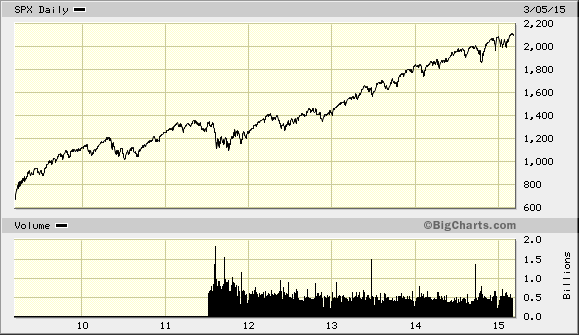

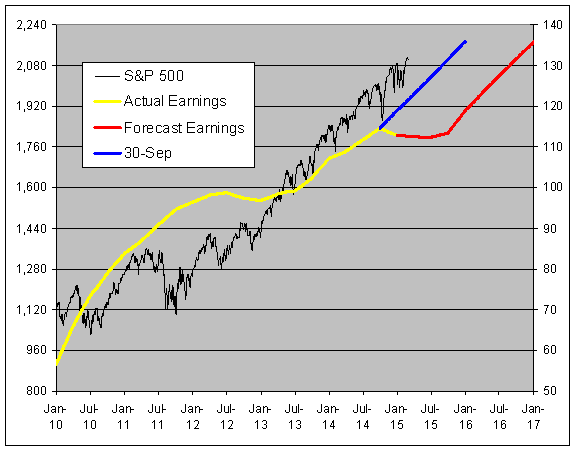
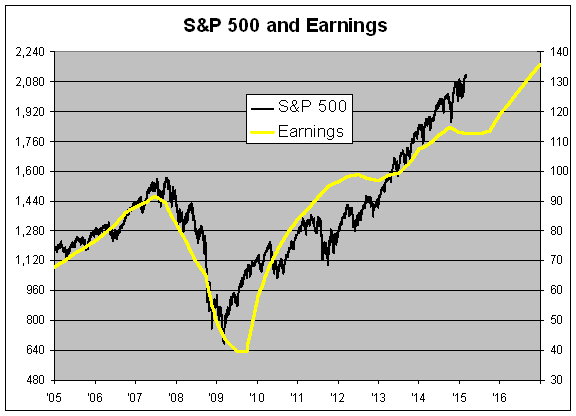
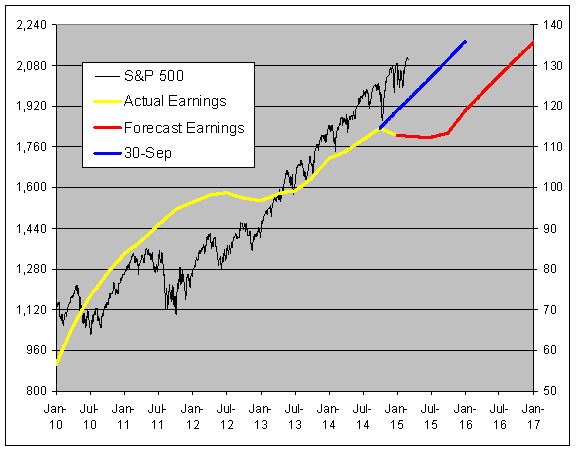
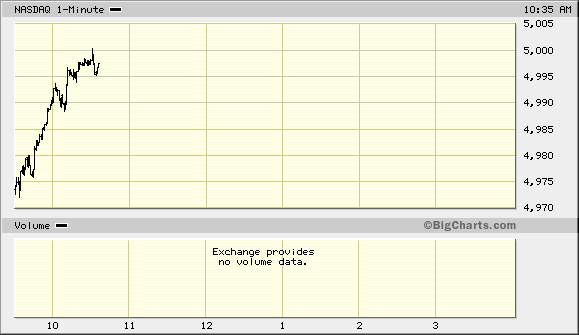
 Eddy Elfenbein is a Washington, DC-based speaker, portfolio manager and editor of the blog Crossing Wall Street. His
Eddy Elfenbein is a Washington, DC-based speaker, portfolio manager and editor of the blog Crossing Wall Street. His